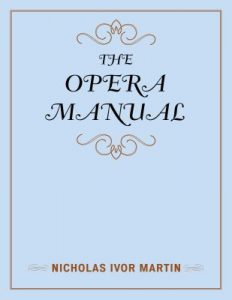The Opera Manual
 This second edition of Nicholas Ivor Martin’s operatic repertoire guide was published earlier this year as a part of the Scarecrow press’ “Music Finders” series. It assists opera production staff in selecting operas during season planning, as well as in preparing for an opera production. Martin includes operas that are most often performed and/or are most likely to remain in the repertory over the long term, with preference given to works for which scores are readily available. Organized alphabetically by original-language title, entries include information about sets, acts, length, arias, staging hazards, scenes, categorization of roles, chorus roles, dance, orchestration, publisher, and score copyright. The volume includes five indexes: Operas by Title, Operas by Composer, Librettists, Arias, and One-Act Operas.
This second edition of Nicholas Ivor Martin’s operatic repertoire guide was published earlier this year as a part of the Scarecrow press’ “Music Finders” series. It assists opera production staff in selecting operas during season planning, as well as in preparing for an opera production. Martin includes operas that are most often performed and/or are most likely to remain in the repertory over the long term, with preference given to works for which scores are readily available. Organized alphabetically by original-language title, entries include information about sets, acts, length, arias, staging hazards, scenes, categorization of roles, chorus roles, dance, orchestration, publisher, and score copyright. The volume includes five indexes: Operas by Title, Operas by Composer, Librettists, Arias, and One-Act Operas.
Abraham Myler, research assistant
